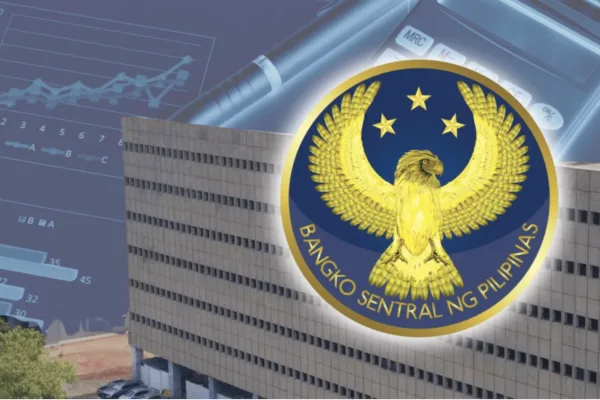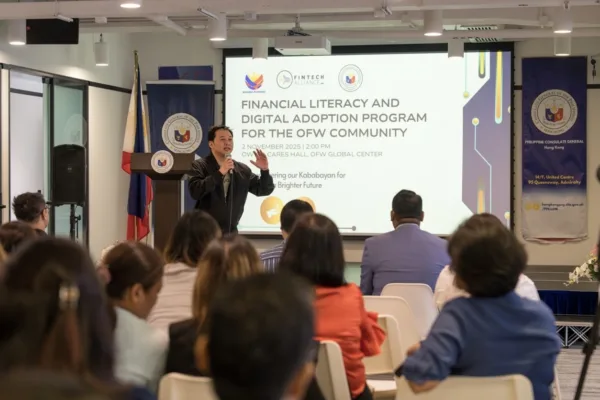The Philippines’ Balance of Payments (BOP), a crucial indicator tracking the country’s economic transactions with the rest of the world, registered a notable deficit of US$3.0 billion in the first quarter of 2025. This marks a significant turnaround from the US$238-million surplus recorded during the same period last year, signaling a recalibration in the nation’s external accounts.
The primary driver behind this reversal in BOP was a substantial widening of the current account deficit.
While a deficit in the BOP often garners immediate attention, a deeper dive into its components reveals a nuanced interplay of global and domestic economic forces, with robust financial inflows providing a vital counterweight.
Current account: The widening BOP gap

The current account, encompassing trade in goods and services, as well as income from overseas Filipinos (OFs) [1] and other sources, saw its deficit double in Q1 2025, surging to US$4.2 billion from US$2.1 billion in Q1 2024. This expansion translated to a larger share of the Gross Domestic Product (GDP), increasing from 1.9 percent to 3.7 percent over the year.
The primary factor contributing to this wider deficit was a growing merchandise trade gap. Import spending outpaced export earnings, reflecting possibly stronger domestic demand or rising global commodity prices.
Furthermore, net revenues from trade in services contracted. This was largely due to a decrease in transport services receipts and an uptick in outbound travel spending by Filipinos, indicating a resurgence in international leisure or business trips.
A mitigating factor, however, was the continued resilience of remittances from overseas Filipinos, which partially cushioned the deficit’s expansion. These remittances remain a steadfast pillar of support for the Philippine economy.
Financial account: A resilient counterbalance for BOP

Despite the current account’s pressures, the financial account demonstrated remarkable strength, posting net inflows of US$6.7 billion in Q1 2025. This represents a robust 43.2 percent increase from the US$4.6 billion recorded in the same quarter last year.
This significant influx was primarily propelled by notable increases in net direct investments and other investment accounts. Direct investments, [2] typically long-term in nature and reflecting confidence in the country’s economic prospects, alongside other forms of investment such as placements in currency and deposits, loans, and trade credits/advances, saw substantial growth. This was further bolstered by sustained inflows from portfolio investments, which include placements in stocks and bonds, signaling continued investor interest in Philippine financial markets.
Capital account and international reserves: Stable foundations

The capital account, while smaller in magnitude, also registered a surplus of US$23 million in Q1 2025, up by 35.9 percent from US$17 million in Q1 2024. This modest increase was attributed to gross disposals of non-produced non-financial assets, [3] such as intellectual properties like trademarks and copyrights.
Furthermore, the country’s Gross International Reserves (GIR), the foreign assets held by the Bangko Sentral ng Pilipinas (BSP) to safeguard against external shocks, remained robust. As of October 2024, it stood at US$112.43 billion (based on preliminary data) and then by end-March 2025, GIR stood at US$106.7 billion, an increase from the US$104.1 billion level recorded at end-March 2024. These reserves, primarily composed of foreign-issued securities, gold, and foreign exchange, provide a strong buffer for the economy.
Exchange rate dynamics

In Q1 2025, the Philippine Peso exhibited mixed performance against the US Dollar. It averaged P57.97/US$1, appreciating by 0.3 percent relative to the average of P58.15/US$1 in Q4 2024. However, on a year-on-year basis, the peso depreciated by 3.5 percent from an average of P55.96/US$1 in Q1 2024.
Despite the year-on-year nominal depreciation, the peso actually gained external price competitiveness against major trading partners and developing countries. This was indicated by decreases in the real effective exchange rate (REER) indices, suggesting that Philippine goods and services became more competitive in international markets.
While the Q1 2025 BOP deficit indicates a shift from the previous year’s surplus, the underlying dynamics reveal a more complex picture. The widening current account deficit, driven by trade and service outflows, is being significantly offset by strong inflows into the financial account, reflecting sustained investor confidence.
Coupled with healthy international reserves, these factors underscore the Philippine economy’s ongoing BOP adjustments within the evolving global economic landscape. The BSP continues to monitor these developments closely, ensuring policy settings remain appropriate to maintain external stability.
—
[1] Income includes remittances of non-resident OFs, earnings of resident OF workers, profit from Philippine investments abroad, and transfers, such as gifts, grants and donations.
[2] Other investments may be in the form of placements in currency and deposits, loans, and trade credits/advances.
[3] Non-produced non-financial assets comprise mainly of intellectual properties such as trademarks and copyrights.








